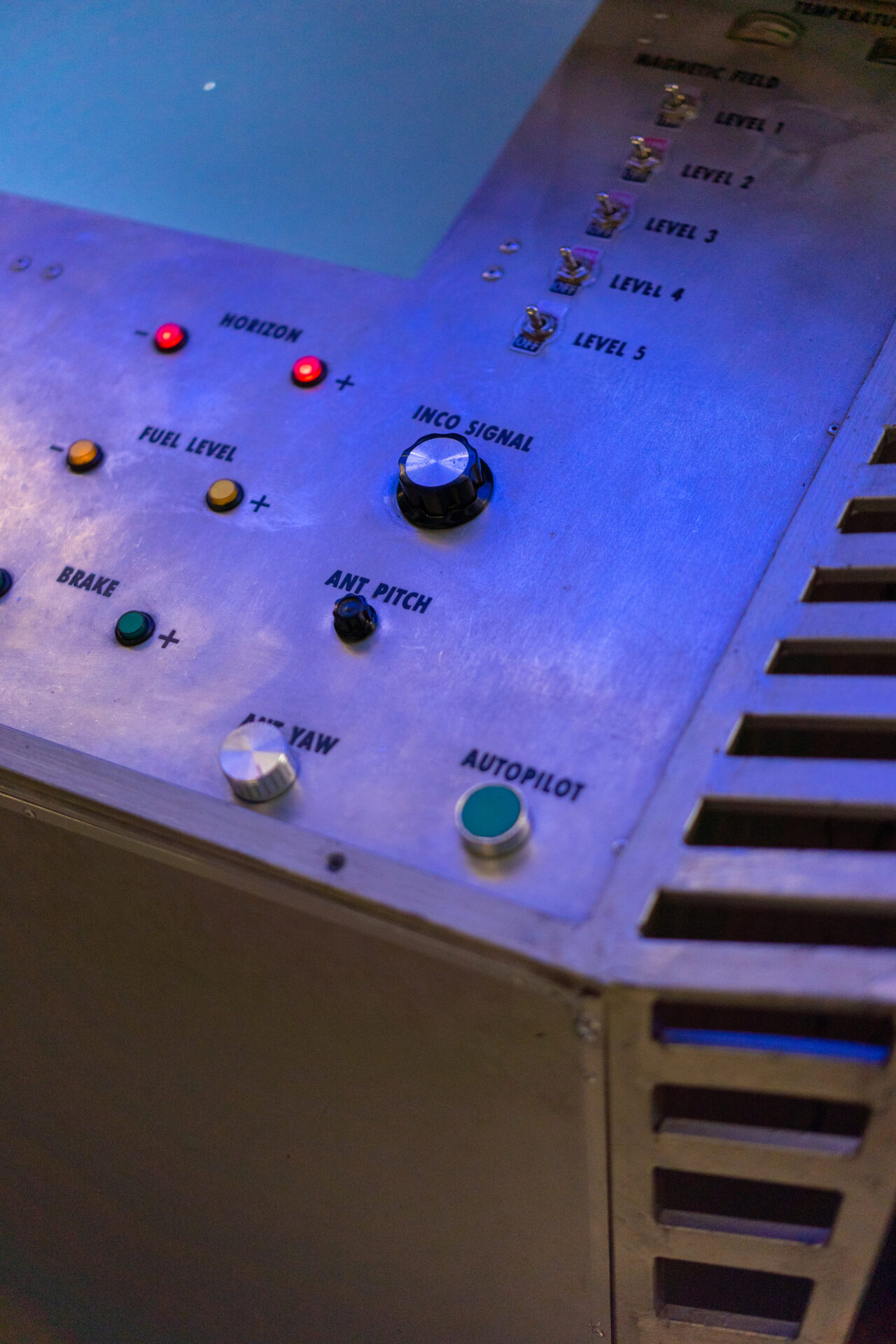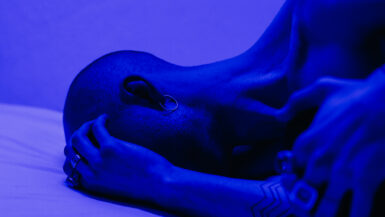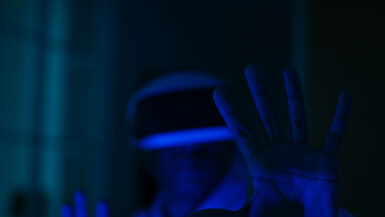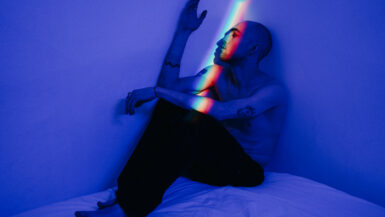In today’s fast-paced world, technology has become an integral part of our daily lives, but it also brings with it a new challenge – the impact of blue light on our sleep and productivity. As healthcare professionals, it is crucial to understand the complex relationship between blue light exposure and its effects on sleep patterns, circadian rhythms, and overall productivity. In this comprehensive guide, we delve into the science behind blue light, its sources, and how it can disrupt sleep quality. Furthermore, we explore evidence-based strategies to mitigate the adverse effects of blue light exposure, enabling individuals to maintain optimal sleep hygiene and enhance productivity. This article serves as a valuable resource for healthcare professionals, empowering them with the knowledge and tools to educate and support their patients in navigating the challenges presented by our increasingly digital world.
Effects of Blue Light Exposure on Sleep Patterns
Blue light exposure, particularly in the evening and nighttime, has been found to significantly affect sleep patterns and overall sleep quality. Understanding these effects is crucial for healthcare professionals in guiding their patients towards better sleep hygiene and nocturnal habits. In this section, we delve into the impact of blue light on sleep patterns, discussing the biological mechanisms involved, and highlighting specific populations that may be more susceptible to these effects.
Biological Mechanisms: Melatonin Suppression and Circadian Rhythm Disruption
Blue light exposure has been found to suppress the production of melatonin, the hormone responsible for regulating sleep and wakefulness. The pineal gland in the brain produces melatonin in response to darkness, signaling the body to prepare for sleep. Exposure to blue light, especially in the evening, can disrupt this process, leading to reduced melatonin secretion and difficulty falling asleep.
In addition to melatonin suppression, blue light exposure can also affect the body’s circadian rhythm, also known as the internal biological clock. The circadian rhythm regulates various physiological processes, including sleep-wake cycles, hormone release, and body temperature. Blue light exposure during the evening and nighttime can shift the circadian rhythm, causing difficulty falling asleep, overall sleep disruption, and reduced sleep quality.
Vulnerable Populations: College Students and Shift Workers
Certain populations may be more susceptible to the adverse effects of blue light exposure on sleep patterns. The Impact of Blue Light on the Sleep of College Students reveals that college students, who are more likely to use digital devices late into the night, may experience disrupted sleep patterns due to increased blue light exposure. This can lead to sleep deprivation, which has been linked to reduced academic performance, mental health issues, and impaired immune function.
Shift workers, particularly those working during nighttime hours, are also at increased risk for sleep disturbances due to blue light exposure from artificial lighting and electronic devices. This population may experience chronic sleep deprivation, resulting in increased risk for various health issues, including cardiovascular disease, obesity, and diabetes.
Reducing the Impact of Blue Light Exposure on Sleep Patterns
Healthcare professionals can play a vital role in helping patients mitigate the effects of blue light exposure on sleep patterns. Educating patients on the importance of proper sleep hygiene and suggesting practical strategies, such as limiting screen time in the evening, using blue light filtering applications, and creating a sleep-friendly environment, can go a long way in promoting better sleep quality and overall well-being. By addressing the issue of blue light exposure, healthcare professionals can help patients improve their sleep patterns, thereby enhancing their overall health and productivity.
Understanding Blue Light and Its Sources
In order to effectively address the impact of blue light on sleep, it is essential for healthcare professionals to comprehend the nature of blue light and its various sources. This subsection delves into the science behind blue light, outlining its characteristics and explaining the primary sources of blue light exposure. By familiarizing themselves with this information, healthcare professionals will be better equipped to guide their patients in minimizing the adverse effects of blue light on sleep.
Characteristics of Blue Light: Wavelengths and Energy Levels
Blue light is part of the visible light spectrum, with wavelengths ranging from 380 to 500 nanometers. It is located at the higher-energy end of the spectrum, which means that it has shorter wavelengths and emits more energy than other colors of light. Due to its high energy, blue light can penetrate the eye more effectively, reaching the retina and potentially causing damage over time. Moreover, the high-energy nature of blue light is believed to play a significant role in its impact on sleep patterns and circadian rhythms.
Primary Sources of Blue Light: Natural and Artificial
Blue light exposure can come from both natural and artificial sources. The primary natural source of blue light is sunlight, which contains a full spectrum of visible light, including blue light. Sunlight is essential for regulating our circadian rhythm, and daytime exposure to blue light from sunlight can actually be beneficial, promoting alertness and cognitive function.
However, it is the artificial sources of blue light that are of greater concern when it comes to sleep disruption. These include electronic devices with backlit screens, such as smartphones, tablets, computers, and televisions. LED and fluorescent lighting also emit blue light, contributing to the overall exposure levels in our environment. As modern society becomes increasingly reliant on technology and artificial lighting, the potential for blue light exposure to disrupt sleep patterns and overall health has become an important issue for healthcare professionals to address.
Recognizing and Minimizing Blue Light Exposure: A Proactive Approach
Healthcare professionals can play an essential role in helping patients recognize and minimize their exposure to blue light, particularly during the evening and nighttime hours. Encouraging patients to establish a consistent sleep schedule, create a screen-free bedtime routine, and implement the use of blue light filtering applications on devices can all help mitigate the effects of blue light exposure on sleep. Additionally, recommending the use of amber-tinted glasses or promoting the use of warmer-colored lighting, such as incandescent bulbs, can further reduce blue light exposure in the evening.
Armed with the knowledge of blue light’s characteristics, sources, and strategies for minimizing exposure, healthcare professionals can support their patients in achieving better sleep quality and overall well-being. By promoting awareness of the potential impact of blue light on sleep and encouraging healthy habits, healthcare professionals can empower their patients to make informed choices and improve their long-term health and productivity.
Strategies for Reducing Evening Blue Light Exposure
As healthcare professionals, it is crucial to provide patients with effective strategies to minimize blue light exposure in the evening, thereby promoting better sleep quality and overall well-being. In this subsection, we delve into a variety of practical approaches that can help reduce evening blue light exposure, ranging from adjustments to personal habits to the use of specific tools and technologies. By incorporating these strategies into their daily routines, patients can mitigate the adverse effects of blue light on their sleep patterns and enhance their overall health and productivity.
Create a Screen-Free Bedtime Routine
One of the most effective ways to reduce blue light exposure in the evening is to establish a screen-free bedtime routine. Encourage patients to put away electronic devices at least an hour before bedtime, allowing the brain to unwind and transition into sleep mode. Instead of using devices, suggest engaging in calming activities, such as reading a physical book, practicing gentle stretches, or engaging in relaxation techniques like meditation or deep breathing exercises.
Implement Blue Light Filtering Applications
For patients who need to use electronic devices in the evening, recommend the use of blue light filtering applications, which can be easily installed on smartphones, tablets, and computers. These applications adjust the color temperature of the screen, reducing the amount of blue light emitted and minimizing its impact on sleep. Instruct patients to activate these applications at least two to three hours before bedtime to maximize their effectiveness.
Opt for Warmer-Colored Lighting
Encourage patients to replace LED and fluorescent lighting in their homes with warmer-colored lighting options, such as incandescent bulbs or warm white LEDs. These types of bulbs emit less blue light, providing a more sleep-friendly environment. Additionally, suggest the use of dimmer switches or smart lighting systems, which allow for easy adjustments to light intensity and color temperature throughout the evening.
Wear Amber-Tinted Glasses
Another effective strategy for reducing blue light exposure in the evening is wearing amber-tinted glasses. These glasses are designed to filter out blue light, allowing the brain to produce melatonin and prepare for sleep. Recommend that patients wear these glasses in the evening, particularly while using electronic devices, to protect their eyes and promote better sleep.
Emphasize the Importance of Natural Light Exposure During the Day
Finally, remind patients of the importance of natural light exposure during the day, as it helps regulate their circadian rhythm and maintain healthy sleep patterns. Encourage patients to spend time outdoors or near windows during daylight hours to receive adequate exposure to natural light. This daytime exposure to blue light can actually be beneficial, promoting alertness and cognitive function.
By providing patients with these evidence-based strategies to reduce evening blue light exposure, healthcare professionals can empower them to take control of their sleep hygiene and overall well-being. As a result, patients will be better equipped to maintain healthy sleep patterns, improve their overall health, and enhance their daily productivity.
Blue Light and Circadian Rhythm Disruption
As healthcare professionals, it is essential to understand the complex relationship between blue light exposure and the disruption of circadian rhythms, which can have significant implications for sleep patterns, overall health, and daily productivity. In this subsection, we delve deeper into the biological mechanisms behind blue light’s impact on circadian rhythms, explore various factors that can exacerbate these effects, and discuss practical approaches to counteract the negative consequences of blue light exposure on our internal body clock.
Biological Mechanisms: How Blue Light Affects Circadian Rhythms
The circadian rhythm is our internal biological clock that governs various physiological processes, including the sleep-wake cycle, hormone release, and body temperature regulation. Blue light exposure, particularly during the evening and nighttime hours, has been found to interfere with the normal functioning of circadian rhythms.
The retina contains specialized photoreceptor cells called intrinsically photosensitive retinal ganglion cells (ipRGCs), which are particularly sensitive to blue light. When exposed to blue light, these cells send signals to the brain’s suprachiasmatic nucleus (SCN), the master clock that controls circadian rhythms. This signaling can suppress melatonin production and shift the timing of the circadian rhythm, leading to difficulties falling asleep, fragmented sleep, and overall sleep disruption.
Exacerbating Factors: Device Usage, Light Pollution, and Age
There are several factors that can exacerbate the effects of blue light on circadian rhythm disruption. Prolonged device usage, especially during nighttime hours, can significantly increase blue light exposure and consequently disrupt sleep patterns. With smartphones, tablets, and computers being an integral part of modern life, it is crucial to recognize their potential impact on sleep and circadian rhythms.
Moreover, light pollution caused by artificial lighting in urban environments can further contribute to circadian rhythm disruption. In areas with high levels of light pollution, individuals may experience increased exposure to blue light even during nighttime hours, making it more challenging for the body to maintain a healthy sleep-wake cycle.
Age is another factor that can influence the impact of blue light on circadian rhythms. Aging is associated with changes in the structure and function of the retina, which can affect the sensitivity to blue light and the subsequent signaling to the SCN. Older adults may be more susceptible to the negative effects of blue light exposure on their circadian rhythms, emphasizing the importance of addressing this issue across different age groups.
Counteracting Circadian Rhythm Disruption: Practical Approaches
Healthcare professionals can play a vital role in helping patients counteract the negative consequences of blue light exposure on circadian rhythms. By promoting awareness and providing evidence-based strategies, healthcare professionals can empower patients to make informed choices and maintain healthy sleep patterns.
Suggesting a consistent sleep schedule, limiting device usage during nighttime hours, and encouraging the use of blue light filtering applications are all practical solutions that can help mitigate the impact of blue light exposure on circadian rhythms. Additionally, emphasizing the importance of adequate natural light exposure during daylight hours can aid in maintaining a balanced circadian rhythm, as it helps to counterbalance the negative effects of artificial blue light exposure.
By deepening their understanding of the intricate relationship between blue light and circadian rhythm disruption, healthcare professionals can better guide their patients towards optimal sleep hygiene and overall well-being. Providing practical, evidence-based solutions to address the challenges posed by blue light exposure will enable patients to enjoy improved sleep quality, enhanced daily productivity, and long-term health benefits.
Impact of Blue Light on Workplace Productivity
As healthcare professionals, understanding the link between blue light exposure and workplace productivity is essential for guiding patients in optimizing their daily routines and work environments. In this subsection, we explore the impact of blue light on productivity, discussing the potential benefits and drawbacks of blue light exposure in the workplace. Moreover, we provide practical recommendations for striking the right balance between blue light exposure and productivity, empowering healthcare professionals to support their patients in achieving optimal work performance and overall well-being.
Stimulating Alertness and Cognitive Function: The Potential Upsides of Blue Light Exposure
Blue light exposure, particularly during the daytime, can have positive effects on workplace productivity. Research has shown that blue light can stimulate alertness, enhance cognitive function, and improve mood. This is due to the fact that blue light exposure during daylight hours can help regulate the circadian rhythm, promoting wakefulness and alertness in the daytime.
Healthcare professionals can advise patients to take advantage of natural blue light exposure from sunlight during the day to boost their productivity. Encourage patients to work near windows or take breaks outdoors to receive adequate exposure to natural light. Additionally, patients can consider using blue light therapy lamps, which simulate natural sunlight, to help maintain alertness and focus during the workday.
Disrupted Sleep Patterns and Fatigue: The Downside of Blue Light Exposure
On the flip side, excessive blue light exposure, particularly in the evening and nighttime, can negatively impact workplace productivity. As discussed earlier, blue light exposure can suppress melatonin production and disrupt circadian rhythms, leading to poor sleep quality and sleep deprivation. Sleep deprivation, in turn, can result in fatigue, decreased concentration, impaired memory, and reduced problem-solving abilities, all of which can significantly hinder workplace productivity.
Healthcare professionals should educate patients on the potential negative effects of blue light exposure on their work performance and provide guidance on how to minimize these risks. Encourage patients to practice good sleep hygiene, limit device usage in the evening, and create a sleep-friendly environment at home to ensure they are well-rested and ready to tackle the workday.
Striking the Right Balance: Practical Recommendations for Optimizing Blue Light Exposure and Productivity
To help patients maximize productivity while minimizing the adverse effects of blue light exposure, healthcare professionals can offer practical recommendations for striking the right balance. These recommendations include:
1. Encourage patients to prioritize natural light exposure during the day, either by working near windows or taking breaks outdoors, to maintain alertness and cognitive function.
2. Advise patients to limit screen time in the evening and establish a screen-free bedtime routine to protect their sleep quality and reduce the risk of sleep deprivation.
3. Suggest the use of blue light filtering applications on devices and the use of amber-tinted glasses in the evening to minimize blue light exposure and promote better sleep.
4. Recommend patients create a work environment with warmer-colored lighting, such as incandescent bulbs or warm white LEDs, to reduce the impact of artificial blue light exposure on their sleep patterns and overall well-being.
By providing patients with these evidence-based strategies, healthcare professionals can support them in finding the optimal balance between blue light exposure and workplace productivity. As a result, patients will be better equipped to maintain healthy sleep patterns, improve their overall health, and enhance their daily performance at work.





Leave a reply